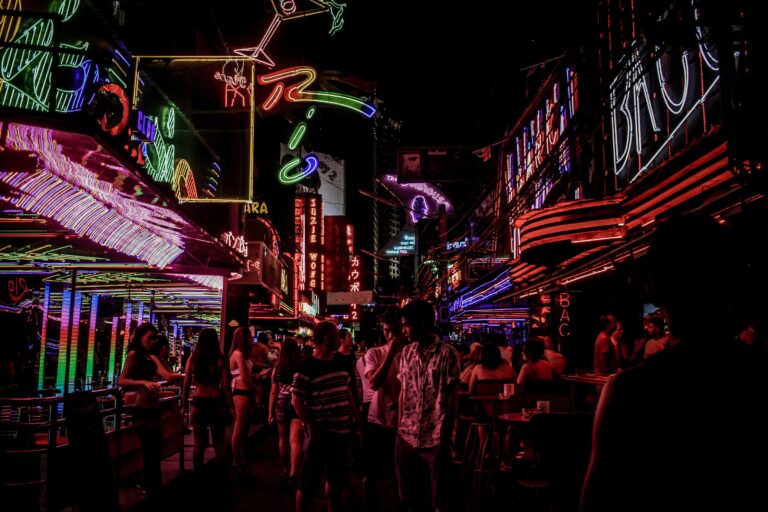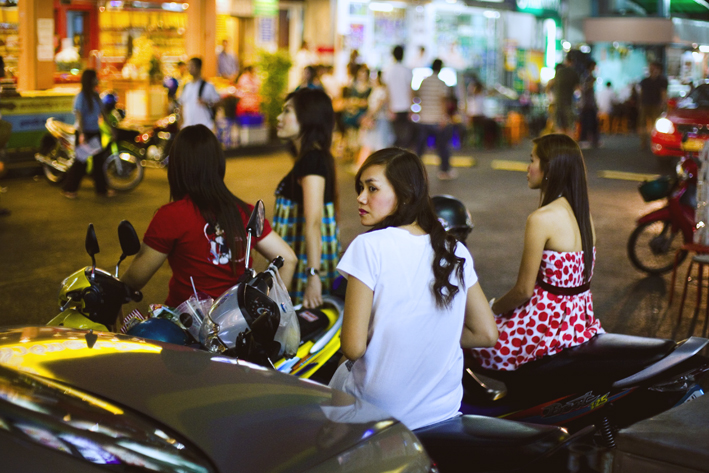
As the night falls in Bangkok, Thailand, the city’s busy streets transform into a reverberating environment after dark. Among the things that cram the inner city are restaurants, nightclubs, and disco bars, making every visitor merry. But Bangkok’s nightlife isn’t all about glitz and glamour. Hidden in the tacky alleys is the dark open secret that proliferates the city: the sex tourism industry.
Sex tourism in Thailand worths $6.4 billion a year. According to the government, some 200 thousand Thais are working as prostitutes, but several nongovernment organizations are afraid that the actual number is even worse. They are estimating 2.8 million sex workers in the country which includes 800 thousand minors.
Some of the places where prostitution is rampant are the so-called red-light districts in Bangkok as well as in Phuket. Several “go-go clubs” line up the streets that offers stark differences but with one common goal, that is to provide an appalling pleasure to customers which are mostly foreigners.
Timeline of Sex Tourism in Thailand

Sex tourism is an unceasing issue in Thailand. Prostitution has been common in the country as early as 1351 during the Ayutthaya Kingdom. During the early days, sex service was legal and taxed through the state ran brothels or sex dens. This shameful form of entertainment went on until the 1960’s.
In the heat of the Vietnam War in the ’50s until the ‘60s, sex commercialization has worsened in Thailand. The country became a refuge for American soldiers looking for “recreation and entertainment.” In return, Thailand indirectly benefited from the aid and money provided by soldiers in exchange for sexual exploitation. The Thai government did not expressly allow this behavior, neither it condemned the act at that time.
The uncanny relationship between Thailand and US soldiers has set a precedent, painting the country as a destination for sex tourists. Even after the US soldiers left, sex tourism became more common in Thailand with western visitors associating the country with prostitution.
Thailand Is Not Alone

Turned out, Thailand is not only the country facing the looming problem of sex tourism. For many years now, it’s neighboring Asian countries and other Latin nations have also been battling this dark side of tourism. Sex tourism nowadays has escalated to a more serious problem such as human trafficking and smuggling.
In the Philippines, prostitution has also been a long problem with over 800 thousand Filipinos engaged in the sex tourism industry. Like in Thailand, the Philippines’ image as a sex destination has resulted from the US military presence in the country, especially in the Subic Bay area.
Cambodia, on the other hand, seems to have the most terrifying battle against sex trafficking. In the last four years, the number of tourist arrival in the country have doubled to 6.2 million. Many are there for the temples and tropical beaches, but some are after cheap sex services that affects mostly children. Predators reportedly guise as volunteers for Cambodian orphanages to prey on vulnerable children. According to End Child Prostitution and Trafficking (EPCAT), approximately 250,000 people travel internationally each year to engage in sex tourism with children and youth.
Poverty Causes Sex Tourism
Of the many reasons for sex tourism, poverty is the most prevalent. There is a clear line that links between severe economic crises and prostitution. Thailand is a classic example.
In the 60s, when Thailand was shifting to become industrialized from being an agrarian country, many rural communities were left out from economic growth. The sudden increase in economic inequalities has forced people in the countryside to look for opportunities in the cities. Due to a lack of qualifications, some Thai women choose to engage in sex work. This scenario is almost true to all sex tourism hotspots in the world.
Among other reasons for prostitution also include inequalities among women and men, high population growth, and rural-urban migration.
How Does World is Curbing Sex Tourism

Multiple efforts have already been made at a global and national level to combat sex tourism. As early as 1996 there was already an existing law in Thailand that penalizes anyone who will engage in prostitution. The Prevention and Suppression of Prostitution Act of 1996 focuses upon child exploitation which forbids anyone to engage in child prostitution.
In the Philippines, the government also condemns the massive sex tourism industry. As a country that advances women’s empowerment, the Philippine government took steps against prostitution. Under its Anti-Violence Against Women and Their Children code, the law criminalizes the act of prostituting a woman or child. Anyone who is guilty of the crime could face 20 years of imprisonment.
Despite the global efforts on curbing prostitution and sex tourism, some critics say that the laws are all just on papers and are not solving the real problem. According to them, most of the laws only penalize the prostitutes and not those real people behind the scheme. They say, instead of condemning the prostitutes, the governments should protect their rights.
In 2003, New Zealand moved to legalize prostitution in the country that made conservatives to raise an eyebrow. The Prostitution Reform Act of 2003 licensed brothels operating under public health and employment laws, which means the workers get social benefits just like other employees. In 2008, the Prostitution Law Review Committee has proven that the legalization of prostitution has subsequently decreased the incidents of sexual coercion in the country.